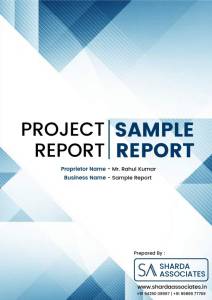Project Report For Resort
Introduction
The project report for Resort is as follows.
A resort is typically thought of as a location where people gather for work, vacation, or enjoyment with their family or friends. As a result, the majority of resorts are located along the coast, in the mountains, in scenic locations, or in areas rich in natural resources.
Because the goal of any resort is to create an experience that allows people to get away from their hectic lives and enjoy time with their friends and family.
In the past, resorts did not provide much more than a gorgeous location and some recreation activities. The resort’s target clientele were only those on vacation.
Resort ideas have evolved in recent years in order to attract customers. They offer not only artistic facilities and services but also commercial facilities and services such as MICE facilities and services. As a result, business people are among the resorts’ target consumers.
A destination resort is one that has all of the essential visitor attraction skills and does not need to be near a destination (town, historic site, theme park, or other) to draw customers.
At a tourist resort, a distance measure, attractive or cultural site, entertainment complex, gaming facility, or other tourist attractions may compete with other businesses.
As a result, another feature of a destination resort is that it provides food, drink, accommodation, sports, entertainment, and shopping within the property, eliminating the need for guests to leave the complex during their stay.
The amenities are usually of greater quality than would be expected if one slept in a hotel or at in city restaurants.
Market Potential Of Resort
India is one of the fastest-growing tourism destinations in the world, and the resort industry is a significant contributor to this growth.
The market size of resorts in India has been steadily increasing over the years, driven by factors such as rising disposable incomes, growing domestic and international tourism, and increased demand for luxury accommodations.
According to a report by the Indian Brand Equity Foundation, the Indian hospitality industry, including the resort segment, was valued at around USD 30 billion in 2019 and is expected to reach USD 57 billion by 2025, growing at a CAGR of 10%. The report also stated that the Indian resort market was valued at around USD 2.8 billion in 2019, and is expected to reach USD 4.8 billion by 2023.
The report identified a few key trends driving growth in the Indian resort market, such as the rise of experiential travel, the increasing popularity of eco-tourism and wellness tourism, and the growing demand for luxury accommodations.
Additionally, the report highlighted that the government’s focus on developing tourism infrastructure and promoting domestic and international tourism is also driving growth in the resort industry.
Some of the major players in the Indian resort industry include companies like Taj Hotels, Marriott International, ITC Hotels, Oberoi Group, and Club Mahindra. These companies operate resorts across various segments, from luxury to mid-range and budget-friendly accommodations.
In conclusion, the Indian resort market is expected to continue its growth trajectory in the coming years, driven by factors such as rising disposable incomes, growing domestic and international tourism, and increased demand for luxury accommodations. With the government’s focus on developing tourism infrastructure and promoting domestic and international tourism, the future looks bright for the resort industry in India.
Project Report Sample On Resort
Need Help?
Create 100% Bankable Project Report

